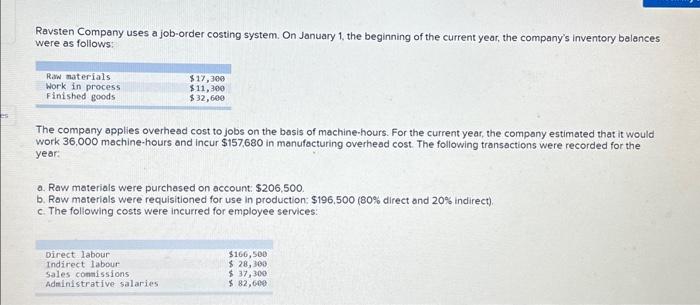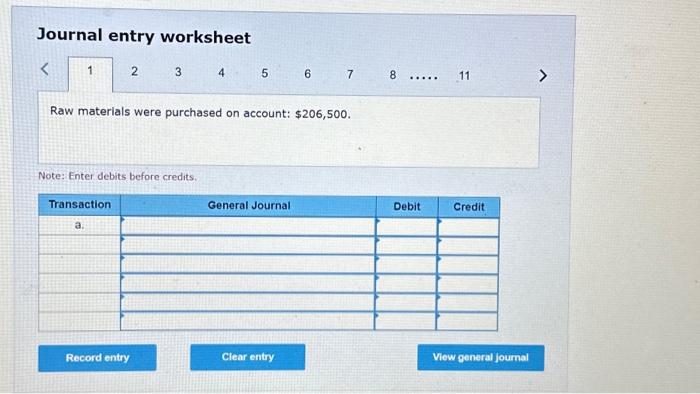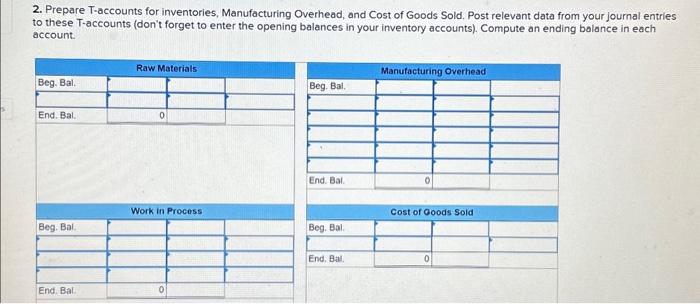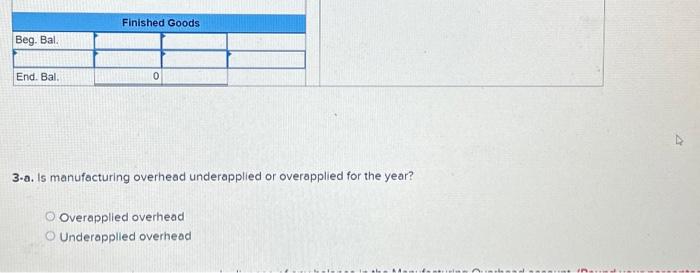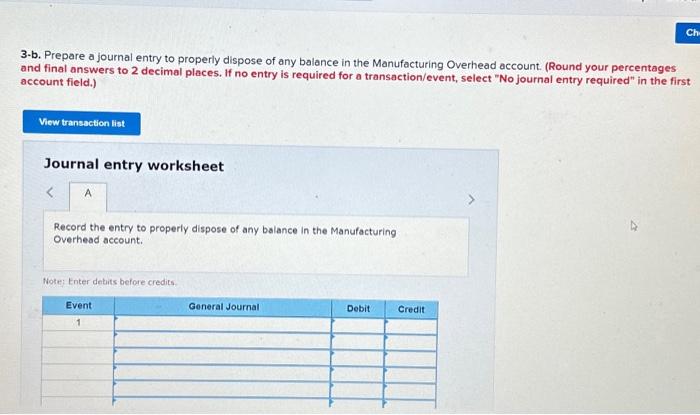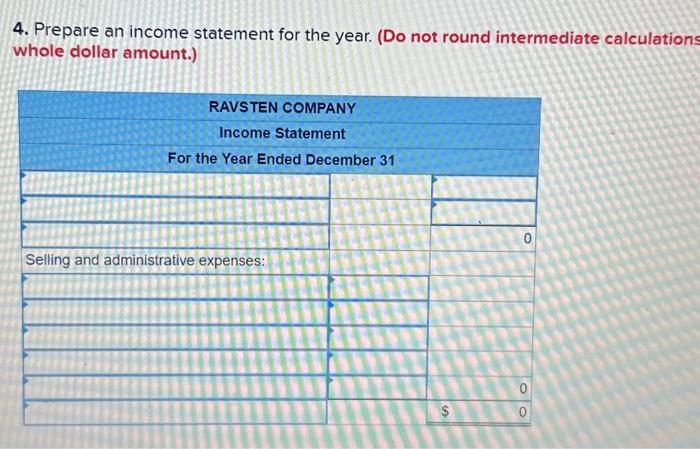Ravsten Company uses a job-order costing system. On January 1, the beginning of the current year, the company's inventory balances were as follows: The company applies overhead cost to jobs on the basis of machine-hours. For the current year, the company estimated that it would work 36,000 machine-hours and incur $157,680 in manufacturing overhead cost. The following transactions were recorded for the year: a. Raw materials were purchased on account: $206,500. b. Row materials were requisitioned for use in production: $196,500(80% direct and 20% indirect). c. The following costs were incurred for employee services: d. Heat, power, and water costs were incurred in the factory: $43,300. e. Prepaid insurance expired during the year: $11,300(90% relates to factory operations, and 10% relates to selling and administrative activities). f. Advertising costs were incurred, $51,300. g. Depreciation was recorded for the year: $61,500(85% relates to factory operations, and 15% relates to selling and administrative activities). h. Manufacturing overhead cost was applied to production. The company recorded 40,000 machine-hours for the year. 1. Goods that cost $495,600 to manufacture according to their job cost sheets were transferred to the finished goods warehouse. J. Sales for the year totalled $745,500 and were all on account. The total cost to manufacture these goods according to their job cost sheets was $488,000. Journal entry worksheet 5 6 7 Raw materials were purchased on account: $206,500. Note: Enter debits before credits. 2. Prepare T-accounts for inventories, Manufacturing Overhead, and Cost of Goods Sold. Post relevant data from your journal entrles to these T-accounts (don't forget to enter the opening balances in your inventory accounts). Compute an ending balance in each account. 3-a. Is manufacturing overhead underapplied or overapplied for the year? Overapplied overhead Underapplled overhead 3-b. Prepare a journal entry to properly dispose of any balance in the Manufacturing Overhead account. (Round your percentages and final answers to 2 decimal places. If no entry is required for a transaction/event, select "No journal entry required" in the first account field.) Journal entry worksheet Record the entry to properly dispose of any balance in the Manufacturing Overhead account. Note: Enter debits before credits. 4. Prepare an income statement for the year. (Do not round intermediate calculation whole dollar amount.) Ravsten Company uses a job-order costing system. On January 1, the beginning of the current year, the company's inventory balances were as follows: The company applies overhead cost to jobs on the basis of machine-hours. For the current year, the company estimated that it would work 36,000 machine-hours and incur $157,680 in manufacturing overhead cost. The following transactions were recorded for the year: a. Raw materials were purchased on account: $206,500. b. Row materials were requisitioned for use in production: $196,500(80% direct and 20% indirect). c. The following costs were incurred for employee services: d. Heat, power, and water costs were incurred in the factory: $43,300. e. Prepaid insurance expired during the year: $11,300(90% relates to factory operations, and 10% relates to selling and administrative activities). f. Advertising costs were incurred, $51,300. g. Depreciation was recorded for the year: $61,500(85% relates to factory operations, and 15% relates to selling and administrative activities). h. Manufacturing overhead cost was applied to production. The company recorded 40,000 machine-hours for the year. 1. Goods that cost $495,600 to manufacture according to their job cost sheets were transferred to the finished goods warehouse. J. Sales for the year totalled $745,500 and were all on account. The total cost to manufacture these goods according to their job cost sheets was $488,000. Journal entry worksheet 5 6 7 Raw materials were purchased on account: $206,500. Note: Enter debits before credits. 2. Prepare T-accounts for inventories, Manufacturing Overhead, and Cost of Goods Sold. Post relevant data from your journal entrles to these T-accounts (don't forget to enter the opening balances in your inventory accounts). Compute an ending balance in each account. 3-a. Is manufacturing overhead underapplied or overapplied for the year? Overapplied overhead Underapplled overhead 3-b. Prepare a journal entry to properly dispose of any balance in the Manufacturing Overhead account. (Round your percentages and final answers to 2 decimal places. If no entry is required for a transaction/event, select "No journal entry required" in the first account field.) Journal entry worksheet Record the entry to properly dispose of any balance in the Manufacturing Overhead account. Note: Enter debits before credits. 4. Prepare an income statement for the year. (Do not round intermediate calculation whole dollar amount.)
